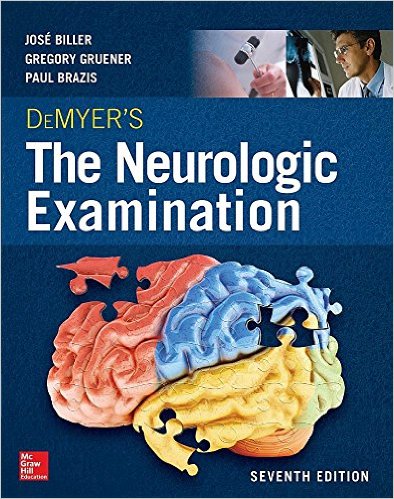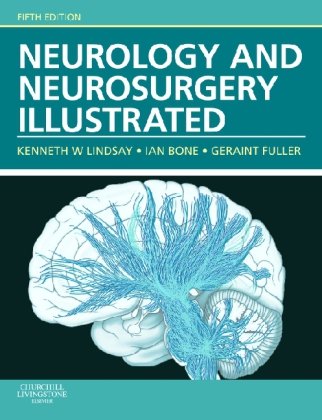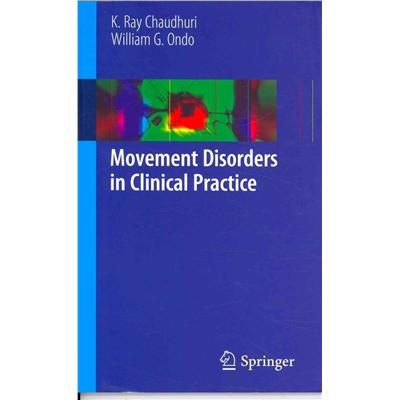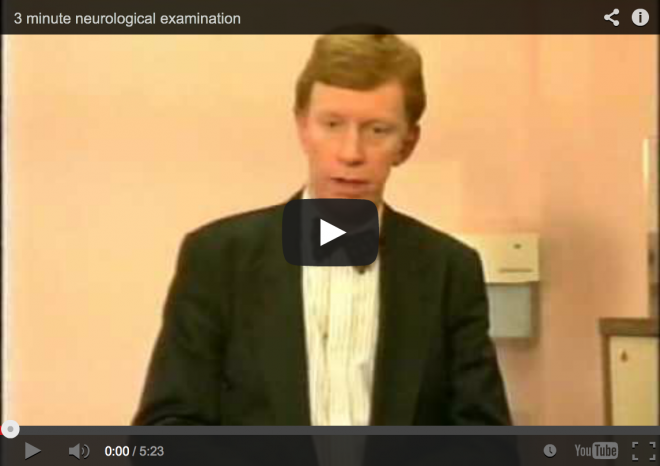Category: Neurology
-
Weakness: An Approach
As a first step, neuromuscular weakness should be distinguished from its mimics, which are: Mental fatigue bradykinesia Decreased range of motion Depression Movement limited by pain. “Abnormal fatigability of striated muscle is the cardinal manifestation of disorders of the neuromuscular junction. Exercise-dependent weakness often affects the extraocular muscles first, causing ptosis or diplopia, as the…
-

Neurology: A Curriculum for Self-Guided Learners
Here is my proposed curriculum for learning neurology: Step 1 Nail down your neuroanatomy with Basic Clinical Neuroscience by Paul A. Young (2007). If you are planning to become a neurologist, neurosurgeon or radiologist, use Sidman’s Neuroanatomy: A Programmed Learning Tool (2007) to help gain a deeper understanding of anatomic and functional neuroanatomy. In the alternative, or as an…
-

Book Review: Neurology and Neurosurgery Illustrated by Kenneth W. Lindsay (2010)
One of the most important and defining aspects of a book is that its content is fixed between its pages. That does something to the mind: it makes goal-setting possible, making it possible to conceive of mastering a particular subject as defined by a particular book’s contents. This is particularly useful in a relatively slowly changing…
-
What do you mean by “dizzy”?
By Mark Yoffe MD I can’t be 100% sure. But if anyone knows, it’s probably Martin A. Samuels MD, who is an expert on the subject and whose excellent publication, Stop the Spinning: A Simple Approach to Vertigo and Dizziness (2009) is available online free. Basically, there are four kinds of dizzy (my interpretation): Syncope or near-syncope…
-

Book Review: Movement Disorders in Clinical Practice
Movement disorders are often difficult to classify, teach and learn, but are nonetheless extremely important to clinical practice. Myoclonus, for example, is an extremely important clinical sign, as is tardive dyskinesia. Movement Disorders in Clinical Practice (2010) by K. Ray Chaudhuri is a superb text that teaches you almost everything you need to know about movement disorders. The text is…
-

Book Review: Neurology and Neurosurgery Illustrated, 4e
Neurologist have a reputation as “thinking types,” so it is not surprising that there are plenty of good neurology books out there. What is surprising to me, however, is the relative paucity of exceptionally good neurology books. Neurology and Neurosurgery Illustrated, Fourth Edition (2004) by Kenneth W. Lindsay PhD FRCS and Ian Bone FRCP FACP is one such…
-

The 3-Minute Neurological Examination Done in Two Minutes Flat!
The 3 Minute Neurological Examination is an excellent screening neurological examination which is executed with nearly impeccable skill in two minutes flat. The explanation section, which follows the demonstration, is excellent too! Tests/commands performed are: With eyes closed: Romberg test (proprioception). With eyes opened: tandem gait (heel-to-toe walking). Walk on tip toes (power test of plantar flexion). Walk on heels…